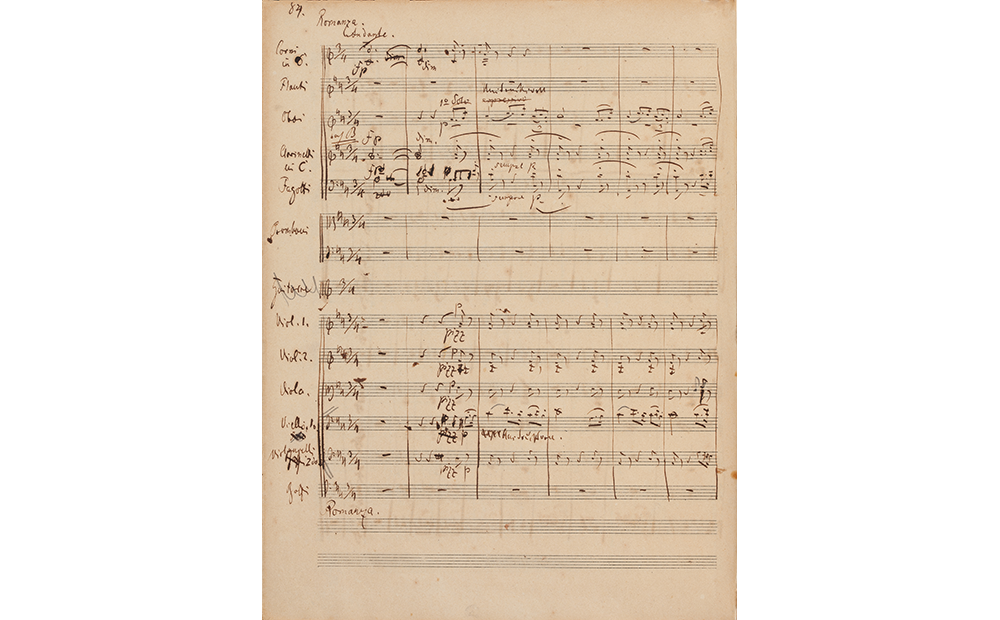Title: Geisterkonzert
Instrumentation: Concerto for guitar and orchestra
Year: 2024–25
Duration: 25 min.
Premiere: Gothenburg, Sweden 2025
Performers: Magnus Andersson and the Gothenburg Symphony Orchestra
In 1841, Schumann originally wanted to include a guitar part in the Romanze movement of his Symphony No. 4. But he later revised the symphony and the guitar part was never realized. What if Schumann had later included the missing guitar part (particularly when he revised the fourth symphony in 1851)?
This would be a guitar part mediated through Schumann’s increasing madness where Schumann the musical inventor gave way to Schumann the musical collector as he engaged in many transcriptions of Bach, fugal writing, etc. to preserve these historical materials in his compositions as a substitute for inventing something new. These historical quotations are used less as material to be developed and act more as invocations of the past, similar to the way in which the poet Hölderlin calls out historical names as signs in his later poetry to achieve an aura of concentrated significance. It is through these repeated invocations as signs in his music that allow for unpredictable flights of fancy to reveal themselves, like the incantations of ghostly spirits, where the Schumann, who had a deep interest in alchemy and often spoke of ghostly visitations, emerges.
This foreign “ghostly” quality of late Schumann somehow emphasizes the subjectivity of the work by stressing the human, visceral presence of the artist behind it, as if sensing someone only through their distance to oneself. Barthes writes “…by allowing Schumann’s body into our experience of the music, we accept it with our imaginings of his illness”.
Schumann’s music, particularly the later music where the spontaneous act of invention seemed compromised by his illness, preserves the many various quotations that he references in glass-like containers, like preserved objects in glass jars, or stone, like preserved names on tombstones. There is constantly the act of remembering in Schumann’s later work through invoking the name of that which is being remembered. Deleuze and Guattari write: “In a concerto, Schumann requires all the assemblages of the orchestra to make the cello wander the way the light fades into the distance or is extinguished, the way something wanders through and then recedes from our memory.”
Geisterkonzert is a reworking of Schumann’s Romanze movement where the guitar part is reconstructed, or invoked as in the spiritualistic séances that Schumann was fond of attending, as a solo part, transforming the Romanze movement into a fantastic guitar concerto. This concerto will be composed through the lens of the later Schumann, where the collector’s room opens up into a juxtaposition of past and present that gradually brings the “missing” guitar part of the Fourth Symphony back from the darkness.


